England are the big favourites against Denmark in their Euro 2020 semi-final battle, but they should not underestimate the inspired Danish team as we saw many of the big teams surprisingly withdrawal from the tournament in an unexpected turn of events.
The fact that England reached the semi-finals with “no real drama” as per the ex-Liverpool player Steve Nicol shows their confidence and trust in the process. Gareth Southgate hasn’t gone all out with his tactics, instead, he quietly planned his every move and adjusted to his opponents’ approaches while keeping the fundamentals of his strategy – a rather conservative style of play with no spectacular tactical twists.
Denmark on the other side have used their initial shock as an inspiration and have transformed their tactics to match up their strengths, aiming for a creative and attacking style of play which made them one of the most enjoyable teams to watch in the competition.
This preview in the form of a tactical analysis will examine both teams’ expected tactics and if the lack of drama so far will give England an advantage against Denmark.
Southgate should be flexible with England’s set-up
One of the biggest questions prior to the fixture is whether Southgate will opt for his 4-2-3-1 formation or will switch to a 3-4-3 similarly to their win over Germany. It is quite likely that he chooses the back three formation to match Denmark’s 3-4-3 but will this actually help the team nullify the opposition’s efforts? It might not.
The Three Lions will need to be quite flexible in their set-up due to Denmark’s movement in possession. Kasper Hjulmand’s side have successfully switched between the 3-4-3 and their previously used 4-3-3 in-game and have used this strategy to their advantage in their attacking actions.
The 3-4-3 scheme might be successful for England if they want more coverage in the wide areas and if they want to draw the opposition numerically as the Danes use their wing-backs quite actively. If the opposition decide to switch to a 4-3-3, though, it could be a whole another story, with Chelsea‘s Andreas Christensen moving up in more of a defensive midfield position and Pierre-Emile Højbjerg accepting a more advanced position.
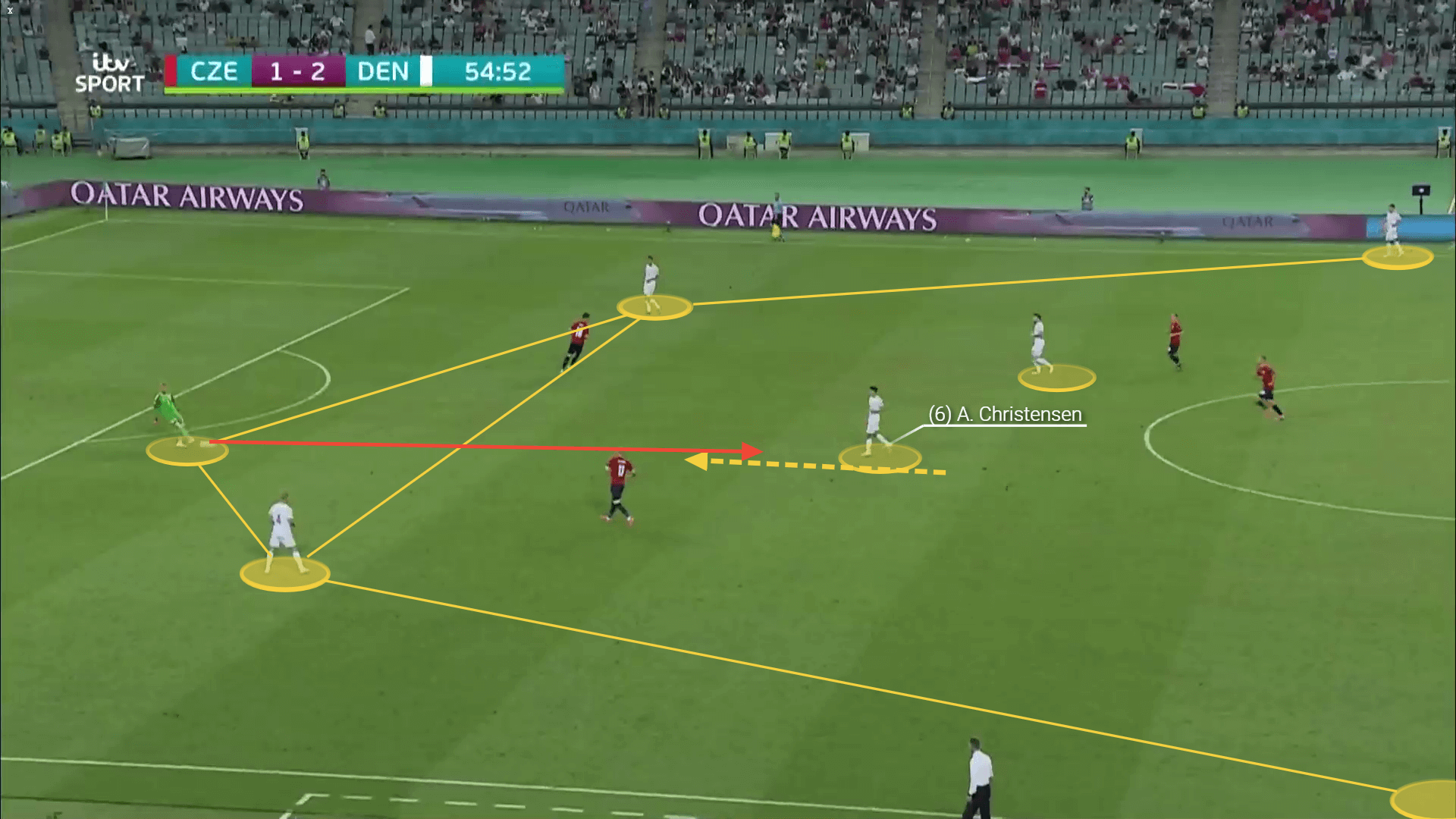
With the full-backs/wing-backs then joining their teammates in the opposition half, this could give Denmark an advantage in attack. Højbjerg became their playmaker in the tournament and is their main creative source, delivering the ball to the advanced areas and creating chances for his teammates. His presence closer to the final third could be crucial for Denmark’s successful attacking actions.
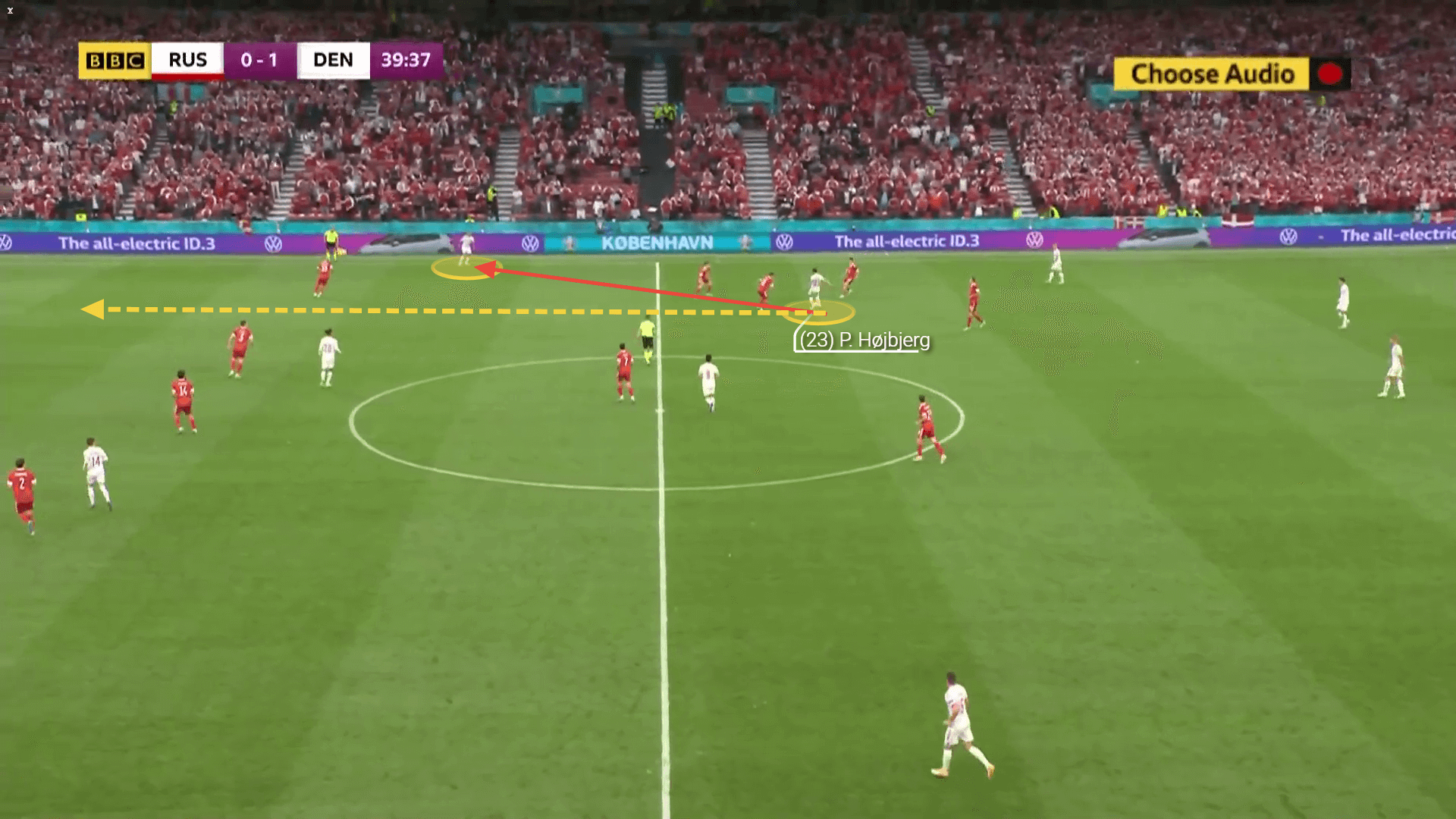
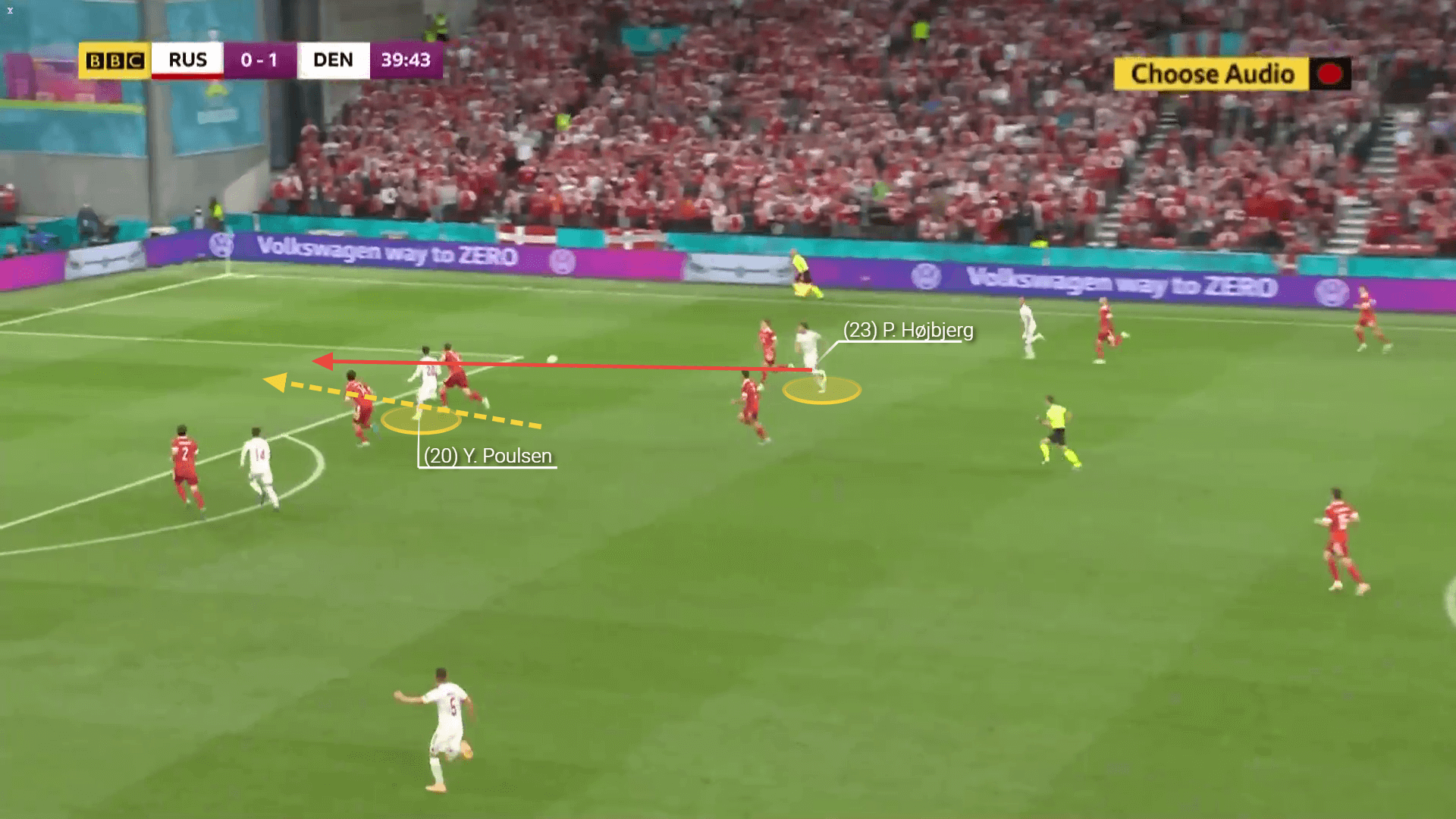
That’s why England need to increase their awareness for these tactical changes and be ready to adjust, especially defensively.
Dropping additional men who could tightly cover Højbjerg in the second line of defence might be key for England if they want to block their opponents’ build-up play. The Three Lions need to be very careful on a counter and always be aware of Højbjerg positioning since the team might use him to start counter-attacks with long balls over the top to the forwards or the
His 10.45 passes to the final third on average per 90 show his importance for Denmark’s ball progression and attacking actions. He has averaged 2.57 through balls in the tournament and is one of the main players to supply the front three with quality balls.
England’s frugal “no drama” approach – will it be successful again?
As mentioned, Southgate hasn’t gone out with never-seen tactical decisions and has relied on a more conservative approach which balanced the team and gave them confidence both defensively and in attack.
Despite the individual quality his side have in attack, the manager has considered the pros and cons of focusing on the attacking actions and constantly staying high up in the opposition half. Instead, he relied on a rather compact shape and retaining possession at the back while they see an opportunity to attack using a lot of positional changes.
That allows the team to stay solid defensively but also take advantage of the opposition’s mistakes and exploit any gaps that have occurred. Of course, that doesn’t mean that the team stay passive and give away the initiative, but it means that they don’t overcommit to the attacking actions and delivering the ball to the forwards at the cost of increasing their defensive vulnerability.
This strategy was really tested out against Germany, who are a very distinguished attacking team. Southgate didn’t change his principles massively but instead, did minor changes to their approach by switching to a back-three. This was done with the aim to have better defensive coverage with the wing-backs dropping during transitions and stopping Germany’s attacks through the flanks and with the hope that they will also bring more edge when in possession by playing with width and exploiting Germany’s weaknesses with crossing.
The 3-4-3 formation could be successful against Denmark too, in terms of blocking their attacking efforts on the flanks. The right wing-back Jens Stryger Larsen has been crucial for the team’s attacking actions, mainly occupying the areas between the central line and the final third. When it comes to Joakim Mæhle on the other side, the Three Lions need to consider his right-footedness and his tendency to take part in passing combinations with his teammates centrally as well as to cut inside. England’s central midfielders need to have increased awareness and support for the defensive actions to avoid any unwanted movement.
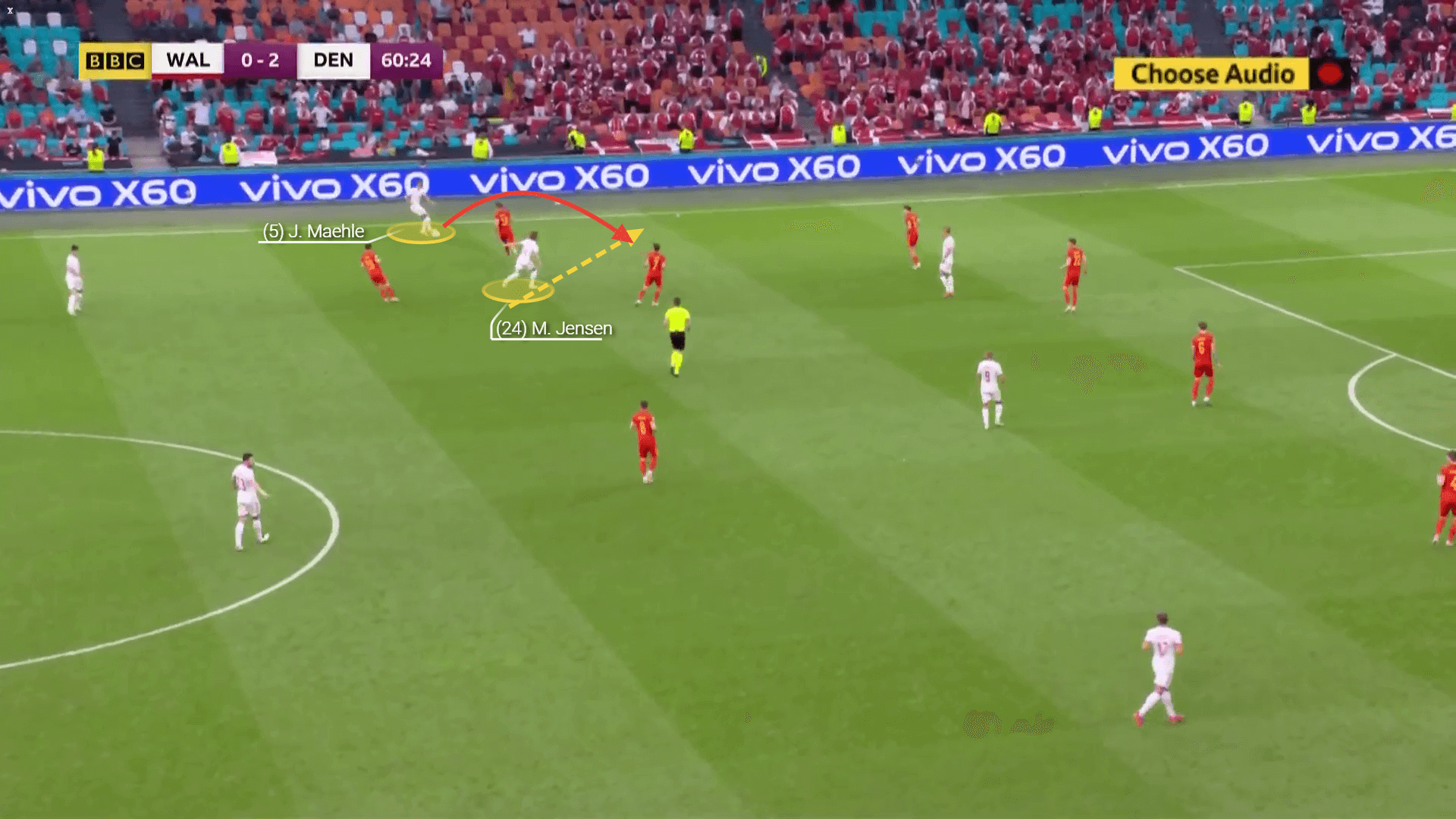
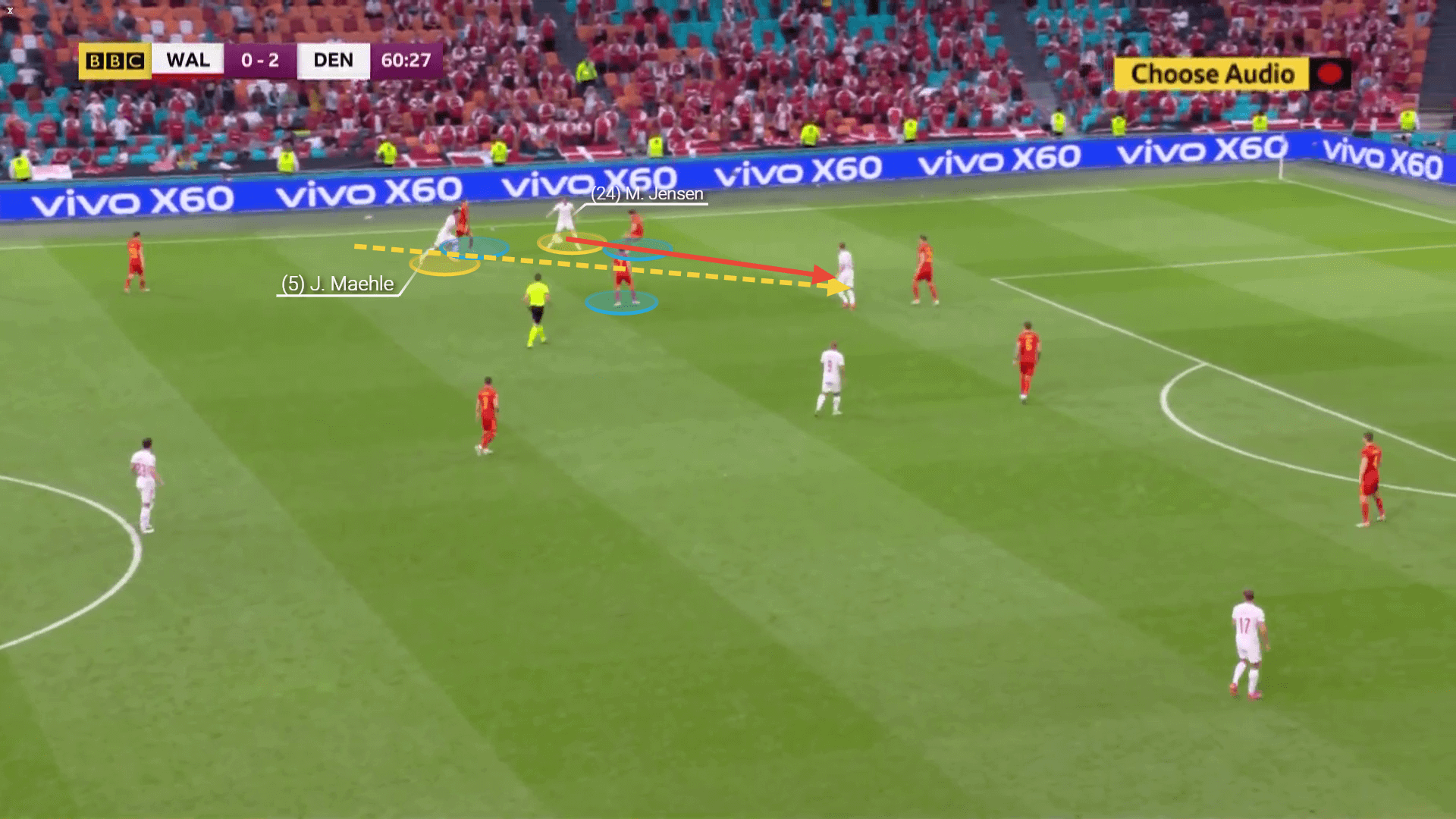
It seems like England don’t need to make any out-of-the-ordinary tactical changes to have a better chance to qualify to the final. Southgate has succeeded by slightly adjusting to the oppositions’ approach without changing the main principles of their game and at first
Denmark’s counter-attacking threat
It is very likely that Denmark give away the initiative and allow the play in their own half, relying on their solid central defence and on the support provided by the wing-backs and Borussia Dortmund‘s Thomas Delaney and Højbjerg’s support.
This will be done in efforts to expose England on a counter. The Danes have completed 3.6 counter-attacks on average per game so far in the tournament and have been quite successful in that matter with 55.6% of them ending with shots.
There are a couple of reasons for that – good positioning in their own half leading to quality passes and very strong aerial performance. Denmark rely on their height and force the opposition into these situations so they can win aerial duels and attack. They are always on the front foot and do recover the ball quite often. With 79.6 recoveries per 90, they are often in good positions for turnovers.
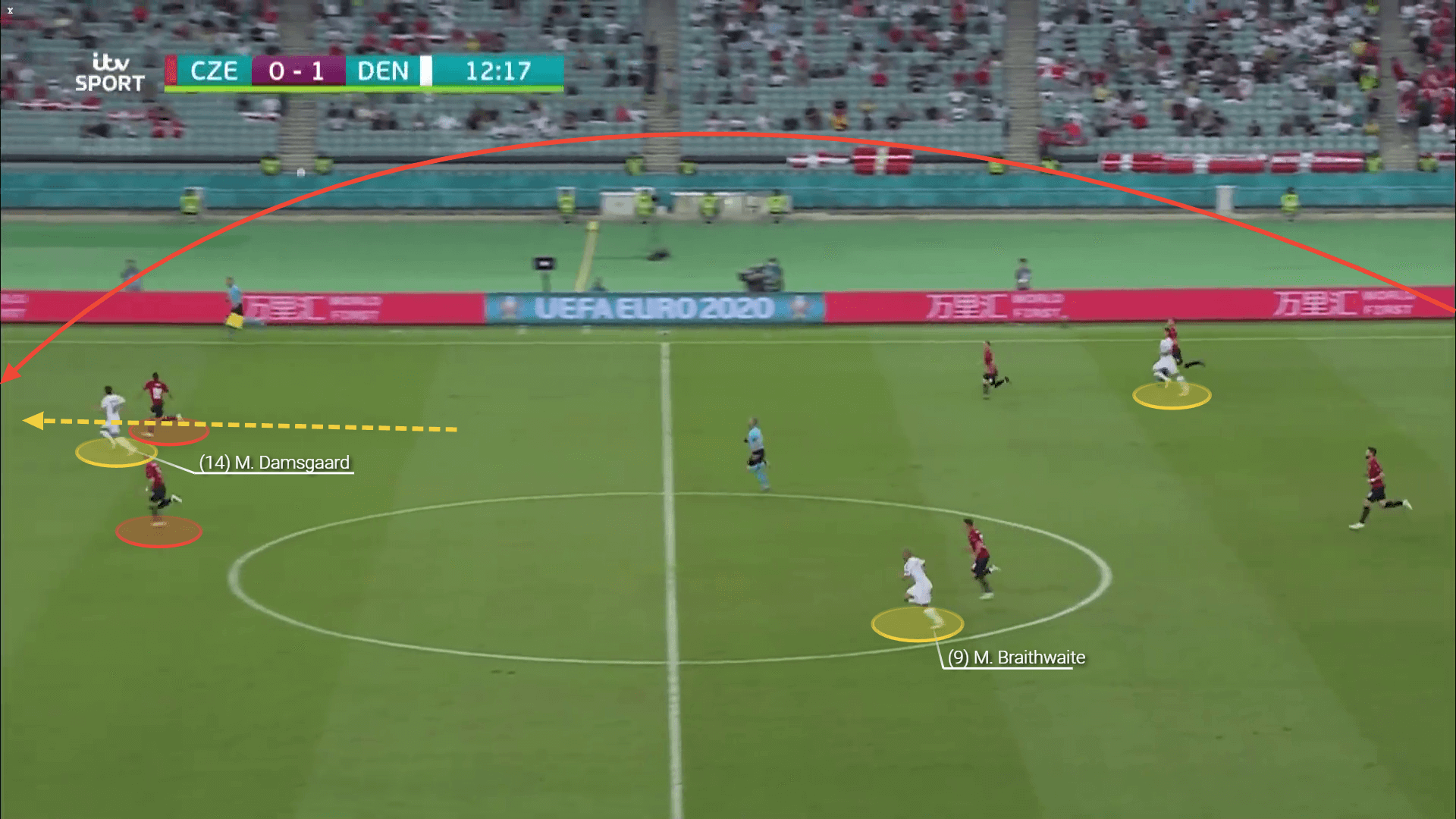
They are successful thanks to Kasper Dolberg’s movement and Mikkel Damsgaard’s speed but they wouldn’t only rely on them in the final stages of the counter-attacks as the wing-backs are also often providing options both on the flanks and by cutting inside.
Their counter-attacking efforts add to their already impressive actions in front of the goal. The Danes have one of the highest shot frequencies on Euro 2020 with 15.8 attempts per 90.
Final thoughts
England are considered to be the favourites against Denmark, thanks to their actions on and off the ball. They have achieved balance both in defence and attack that gives them confidence in each phase leading to measured actions. The Danes, though, do have their strengths and will definitely try their best to expose England’s defence and having in mind their performance so far in the competition, they are capable of scoring the first goal in Jordan Pickford’s goal.






Comments